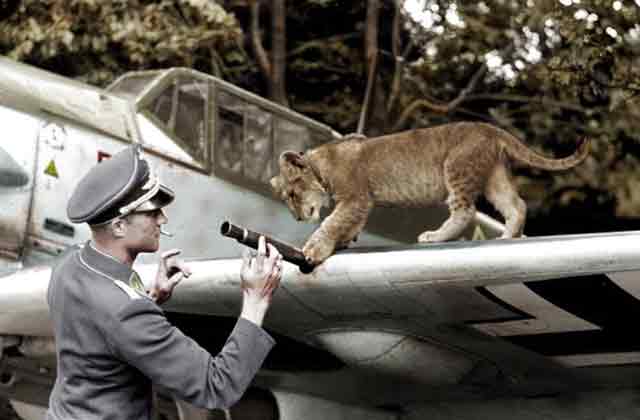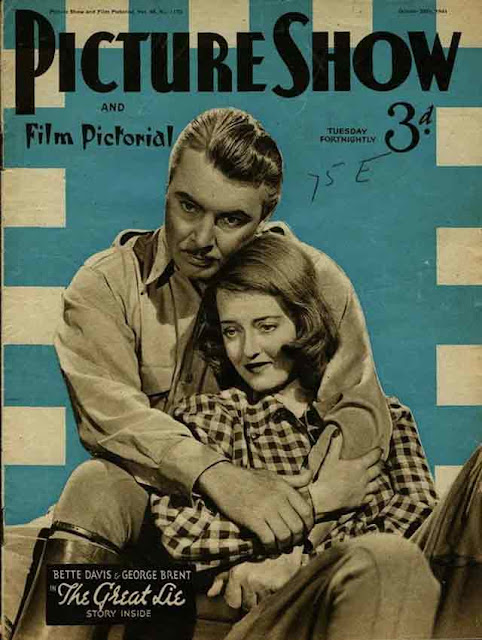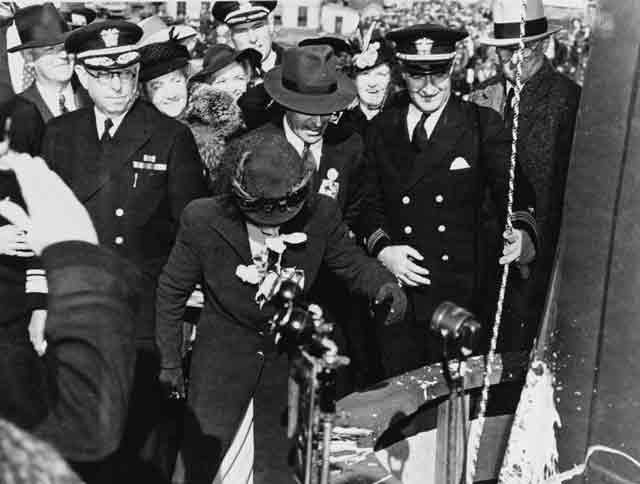Wednesday 10 December 1941
 |
| A Japanese Navy photograph (extensively highlighted for propaganda effect) showing HMS Prince of Wales at upper left and Repulse beside it slightly close to the camera. An unidentified destroyer is at lower right (© IWM (HU 2762)). |
 |
| "A Japanese aerial photograph showing HMS PRINCE OF WALES (top) and HMS REPULSE during the early stages of the attack in which they were sunk. HMS REPULSE had just been hit for the first time (12.20 hours)." © IWM (HU 2763). |
 |
| "Japanese Forces: Japanese cruiser CHOKAI whose seaplane sighted the British ships, HMS PRINCE OF WALES and REPULSE, on 9 December 1941. The next morning they were attacked by Japanese aircraft and both were sunk off the coast of Malaya. The majority of the crews were rescued. The sinkings were an appalling blow to British prestige." © IWM (MH 6207). |
 |
| Sailors abandon HMS Prince of Wales as it increasingly lists. Falling off the rope would mean almost certain death as you got caught between the two ships (AP Photo). |
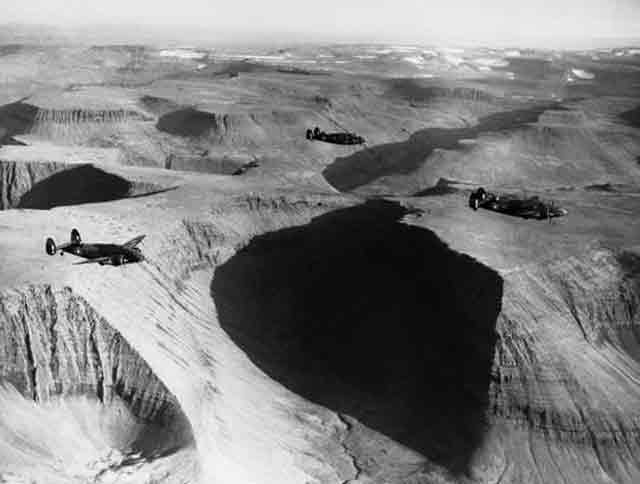 |
| Three RAF Lockheed Hudson aircraft fly in formation over Iceland, 10 December 1941 (AP). |
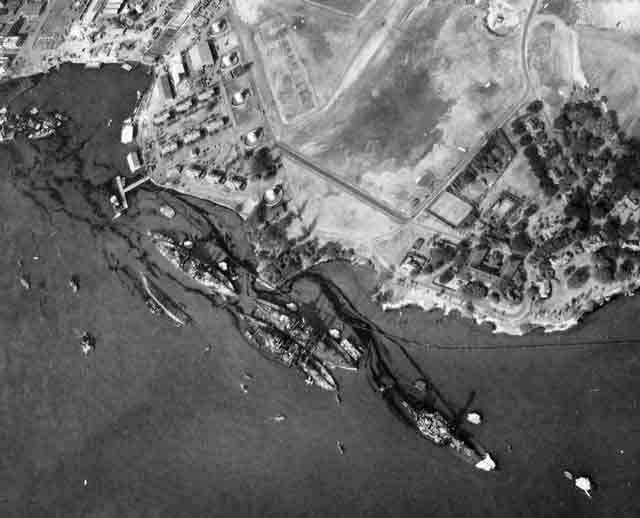 |
| United States Navy Battleship Row off Ford Island, Pearl Harbor, Hawaii on 10 December 1941. Visible (from upper left to lower right) are the sunken USS California (BB-44) (upper left), USS Maryland (BB-46) with capsized USS Oklahoma (BB-37) beside her. USS Oklahoma has a barge beside it as it is assumed there are still sailors in trapped air pockets who need rescue. USS Tennessee is still afloat, but USS West Virginia (BB-48) that is beside it is lying on the harbor floor. Also sunk (though it is hard to tell) is USS Arizona (BB-39) at the lower right All of the battleships will be refloated except for USS Arizona, and all of those will return to service except for Oklahoma, which sinks while being towed to San Francisco in May 1947. US Naval History and Heritage Command. |
 |
| Soviet General Konstantin Rokossovsky poses in front of abandoned German equipment northwest of Moscow near Kalinin (RIA Novosti Soviet news agency as Sovinformburo). |
... discipline is breaking down. More and more soldiers are heading west on foot without weapons, leading a calf on a rope or pulling a sled loaded with potatoes. The road is under constant air attack. Those killed by the bombs are no longer being buried. All the hangers-on (corps troops, Luftwaffe, supply trains) are pouring to the rear in full flight. Without rations, freezing, irrationally they are pushing back. Vehicle crews that do not want to wait out the traffic jams in the open are drifting off the roads and into the villages. Ice, inclines, and bridges create horrendous blockages. Traffic control is working day and night and barely maintaining some movement. The panzer group has reached its most dismal hour.While such reports likely contain a bit of heightened drama due to the desire for higher commands to approve withdrawals, they support similar reports from General Guderian and others around Moscow. German morale is plunging, sapped by the cold and the vulnerability of Wehrmacht positions outside Moscow.
December 1941
December 1, 1941: Hitler Fires von Rundstedt
December 2, 1941: Climb Mount Niitaka
December 3, 1941: Hints of Trouble in the Pacific
December 4, 1941: Soviets Plan Counteroffensive
December 5, 1941: Soviets Counterattack at Kalinin
December 6, 1941: Soviet Counterattack at Moscow Broadens
December 7, 1941: Japan Attacks Pearl Harbor
December 8, 1941: US Enters World War II
December 9, 1941: German Retreat At Moscow
December 10, 1941: HMS Prince of Wales and Repulse Sunk
December 11, 1941: Hitler Declares War on US
December 12, 1941: Japanese in Burma
December 13, 1941: Battle of Cape Bon
December 14, 1941: Hitler Forbids Withdrawals
December 15, 1941: The Liepaja Massacre
December 16, 1941: Japan Invades Borneo
December 17, 1941: US Military Shakeup
December 18, 1941: Hitler Lays Down the Law
December 19, 1941: Brauchitsch Goes Home
December 20, 1941: Flying Tigers in Action
December 21, 1941: The Bogdanovka Massacre
December 22, 1941: Major Japanese Landings North of Manila
December 23, 1941: Wake Island Falls to Japan
December 24, 1941: Atrocities in Hong Kong
December 25, 1941: Japan Takes Hong Kong
December 26, 1941: Soviets Land in the Crimea
December 27, 1941: Commandos Raid Norway
December 28, 1941: Operation Anthropoid Begins
December 29, 1941: Soviet Landings at Feodosia
December 30, 1941: Race for Bataan
December 31, 1941: Nimitz in Charge
2020









